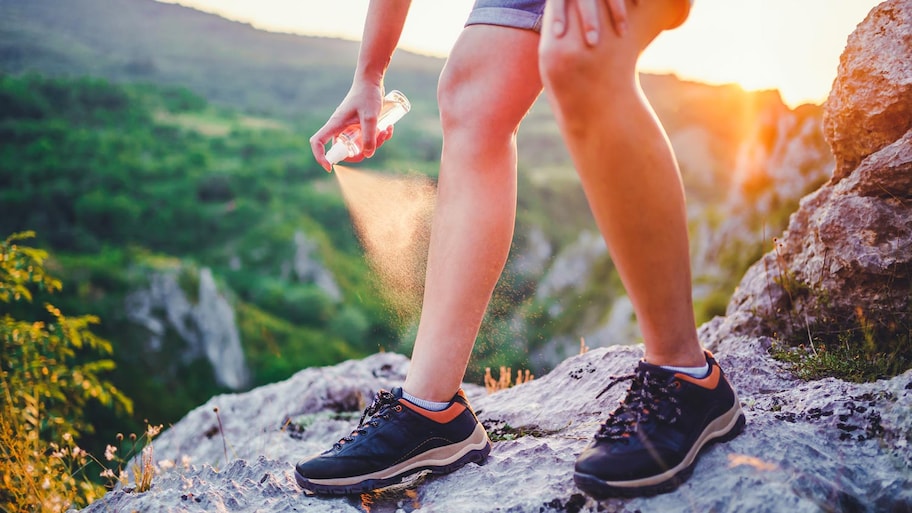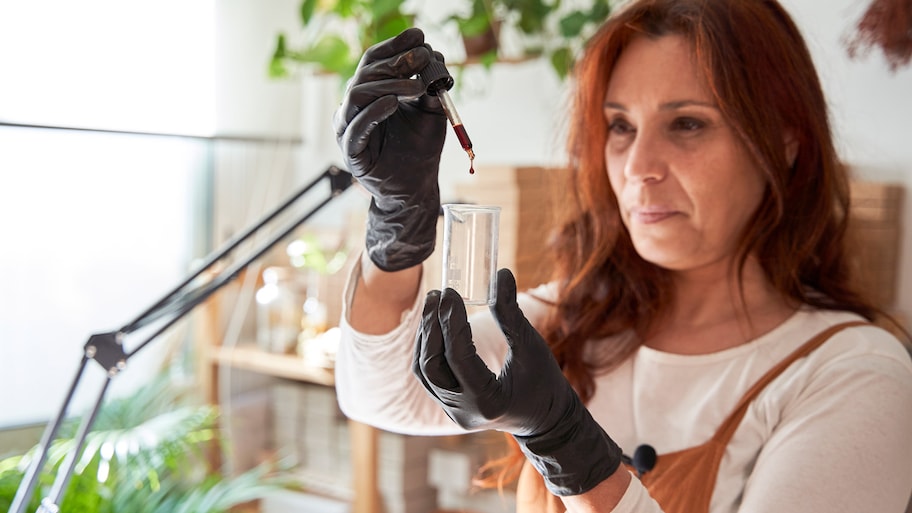How to Make Homemade DIY Mosquito Repellent
Help keep mosquitoes at bay with our easy DIY mosquito repellents that contain simple, everyday ingredients you can find at home


Nobody wants to get intimately acquainted with the local mosquitoes. The nasty, bitey pests can quickly ruin an otherwise fun evening out on the deck with friends. Use this simple DIY mosquito repellent formula to help prevent uncomfortably itchy bites from mosquitoes.
Step 1: Choose a Base
The base is the liquid element of your DIY mosquito repellent. It's usually an astringent that may carry some insect-repelling powers of its own and can create a potentially potent bug-repelling concoction when combined with the other ingredients. It also helps cut the greasiness from the essential oils and carrier oil. In a pinch, or if you're making the mosquito repellent for someone with very sensitive skin, you can use water as the base. However, you'll have to reapply the spray more frequently, as it won't be as effective for as long as one made with an astringent carrier.
The best bases for DIY mosquito repellents are:
Witch hazel: a gentle astringent safe for most skin types
Apple cider vinegar (ACV): A slightly stronger astringent, typically suitable for all but the most sensitive skin. Do not use on broken skin.
Isopropyl alcohol: A strong, effective astringent, but probably isn't suitable for sensitive skin.
White vinegar: Similar to apple cider vinegar, but some people tolerate white vinegar less well than ACV.
Vodka: An effective carrier and strong repellent in itself, but people with sensitive or dry skin may find vodka too drying.
Once you've chosen your base, you'll need approximately 0.5 ounces per 5 drops of essential oil. So, if you're making a half-cup bottle, you'll need about 2.5 fluid ounces of your base.
Place your base in a suitable spray bottle.
Step 2: Choose a Carrier Oil
This neutral oil helps dilute essential oils so you can more safely apply them to your skin. Essential oils are highly concentrated and pretty potent, so, undiluted, there’s a chance they can cause some pretty serious skin irritation.
Top carrier oils for DIY mosquito repellent include:
Coconut oil: A gentle carrier tolerated well by most sensitive skin types. However, it hardens when cool and can leave an oily residue.
Jojoba oil: Technically, this is a liquid wax, but it is a popular gentle carrier oil.
Evening primrose oil: Suitable for all skin types, but especially extremely dry skin and mature skin.
Grapeseed oil: Light, easily absorbable, moisturizing neutral oil typically suitable for all skin types.
Sweet almond oil: A lightweight carrier with a strong, nutty scent that can mask milder essential oils.
Avocado oil: A medium-heavy carrier oil that's usually nourishing for dry, damaged skin and has minimal scent.
Olive oil: A medium-weight carrier oil but has a relatively strong scent that may mask mild essential oils.
Choose your carrier oil and add 2.5 fluid ounces of it to the spray bottle.
Step 3: Choose an Essential Oil Blend

Next up is your essential oil blend (or a single oil, if you prefer). However, using multiple oils is often more effective and can help you ward off other bugs as well as mosquitoes.
There are many plants that repel mosquitoes, but you can't generally walk around covered in sprigs of herbs and flowers, so using their distilled oils lets you harness their bug-fighting power without having to wear the actual plants. Used correctly, essential oils for natural pest control work brilliantly.
Warning: Because you'll be applying this DIY mosquito repellent to your skin, make sure you buy therapeutic-grade essential oils from a reputable brand. Do not buy fragrance oils or essential oils without the therapeutic or food-safe grade, as these may not be safe for skin contact.
Mosquitoes hate a lot of scents almost as much as they adore the scent of human sweat. You can use that to your advantage by choosing a few scents that you like but that the bugs detest.
Some popular essential oils to repel mosquitoes and other bugs are:
Citronella: Has a citrusy, floral scent that is a little strong on its own, but blends well with other floral, herbaceous, and woody oils.
Geranium rose: Feature a strong, floral scent that goes well with herbaceous, woody, and citrusy oils. It helps repel a wide variety of flying insects, fleas, and ticks, and has potent antimicrobial, antifungal, and antiviral properties.
Lavender: With a distinctive floral scent known for its calming properties, lavender is a good choice for an insect repellent for evening use. It also has mild analgesic properties, so it can also soothe your skin if you do still get bitten by a determined bug.
Cinnamon: This warm, spicy scent blends well with woody and floral oils. It repels adult mosquitoes and kills mosquito eggs Lots of bugs loathe cinnamon, so aside from mosquitoes, it also helps repel ants, fleas, ticks, roaches, flies, and spiders.
Thyme: Thyme features an intense spicy, herby scent that pairs well with floral and woody scents. It helps repeal most flying insects.
Lemon eucalyptus: With a distinctive sweet lemon scent similar to citronella, lemon eucalyptus blends well with woody and floral oils. It helps repel many critters, including ants, ticks, fleas, and flying biting and stinging insects.
Tea tree: Tea tree boasts a distinctive herbaceous scent that pairs well with woody oils. It’s also antiseptic, antimicrobial, and anti-inflammatory, and helps repel mosquitoes as well as other flying biting pests.
Peppermint: Featuring that pleasant herbal minty scent, peppermint may help relieve headaches while warding off mosquitoes and a host of other pests.
Once you've chosen your favorite essential oils, add a total of 40-50 drops of your oil blend to the spray bottle. So, if you've chosen two oils, do 20-25 drops of each oil.
Step 4: Shake and Apply
Shake the bottle before every use. Simply spray onto exposed skin, being careful to avoid the eyes, nose, and mouth. For continuous protection, you'll have to reapply the DIY mosquito repellent roughly every four hours.
Safety note: Before you douse yourself in your DIY spray, apply a little onto a small patch of skin and leave it for 30 minutes to make sure you aren't sensitive to any ingredients.
Controlling mosquitoes is a challenge, and it's not always easy to keep them out of your yard. A DIY mosquito repellent spray can come in handy for anything from backyard BBQs to camping adventures.
